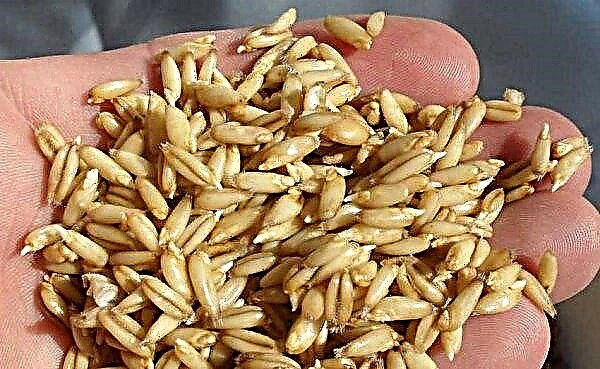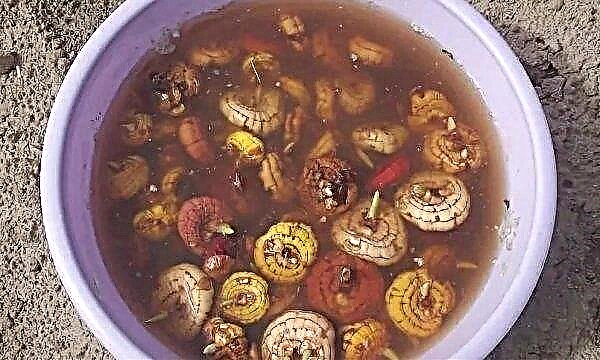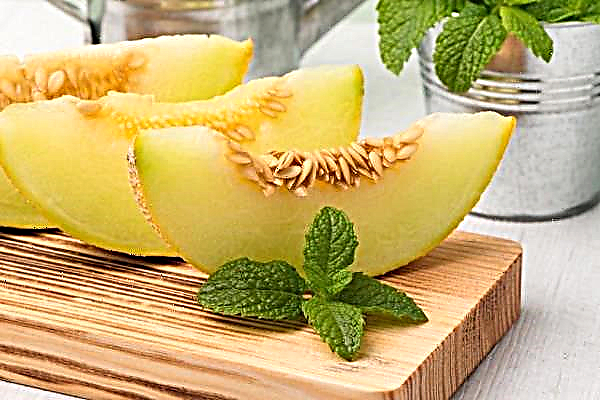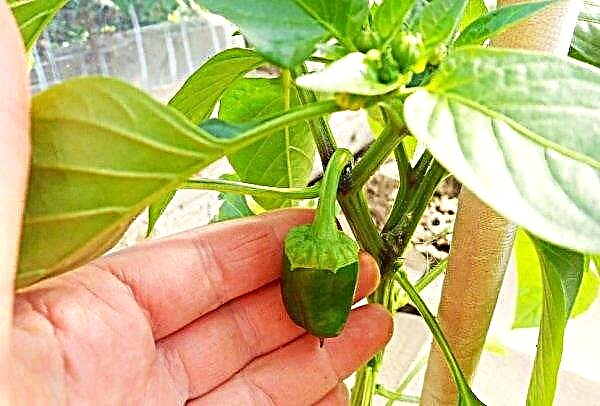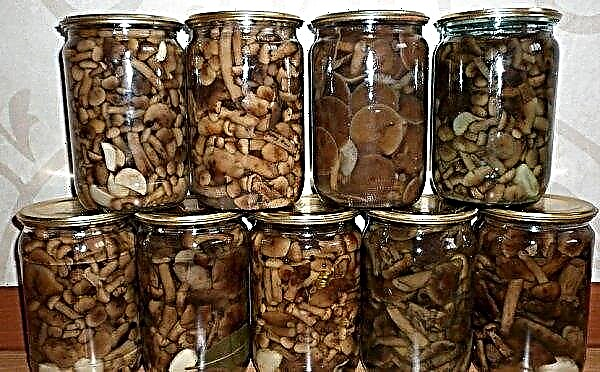Forget-me-not, aka Myosotis, can be either an annual or perennial herb. In the botanical description, the culture belongs to the Borachnikov family. The flowers are small in size. In the natural environment of growth, flower petals are predominantly colored in the familiar blue and blue tones, with a yellow middle. Less common are pink or white plants. Small flowers are collected in inflorescences in the form of curls or brushes. Fruits nuts. The stem of forget-me-nots has a small height, and the leaves resemble an oblong oval in shape. Leaves come in a variety of colors - from gray-green to bright green. In height, the plant can reach 30 cm, although varieties are known and higher.
Perennial species and varieties of forget-me-nots
Plants with one root system and developing for more than two years are considered to be perennial. Unlike shrubs and trees, the stem of forget-me-nots does not become woody. It is believed that such flowers feel more comfortable on poor soils.
Did you know? In Greek, the name of forget-me-not means "ears of mice." She was nicknamed because of the specific shape of the leaves, which resemble the auricles of these rodents.
Marsh
The species is most often used in gardens and it is ideal for breeding in the middle lane. It is considered a short-lived perennial plant. The marsh variety “Turingen” is one of the most common. He, like the whole species, is distinguished by blue flowers. In the wild, it is often found near ponds and near marshes. In this regard, it is often used by landscape designers as a design for artificial lakes and ponds. Successfully grows where the stream flows.

This variety forms the largest flowers among forget-me-nots. They reach a diameter of 1.2 cm. The stem is usually covered with small villi. Its maximum length is up to 30 cm. The leaves of the plant are painted in a bright green color. Their length is 8 cm and their width is 2 cm. Inflorescences begin to bloom in May. The last petals fall only in October. It blooms profusely, as it constantly forms new shoots.
Alpine garden
Forget-me-not Alpine garden, it is also called hybrid, obtained by hybridization of forget-me-not Alpine. Bushes grow to a height of 30 cm. The leaves of this species have a large width and flowers painted in different shades, depending on the variety.
The most popular are:
- "Snow Queen." Blooms with white inflorescences.
- "Biue Ball". The flowers are painted in blue.
- "Indigo." Forms dark blue inflorescences.
- "Rose Pink." It blooms with pink flowers.
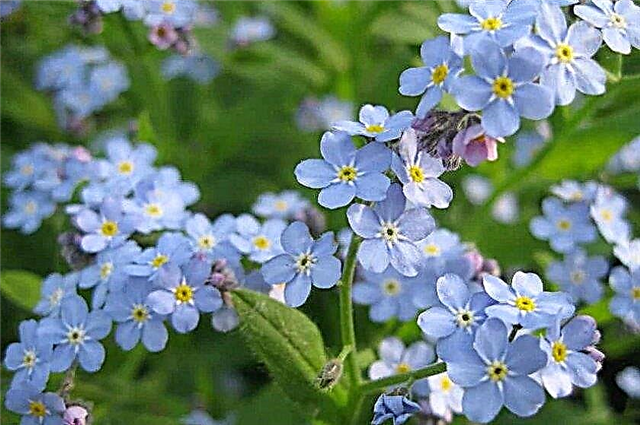 Although considered a perennial, it lives only two years. Each garden variety is not demanding in care. It develops well both in the sun and in the shade. It feels great during a drought and can withstand frosts down to -5 ° C.
Although considered a perennial, it lives only two years. Each garden variety is not demanding in care. It develops well both in the sun and in the shade. It feels great during a drought and can withstand frosts down to -5 ° C.
The first flowers appear in late spring, in May. The period of active flowering lasts for 30 days to 40. Seeds are ready for sowing in mid-summer (late June - early July). In the middle of summer (end of July), the first sprouts appear from them. By August, they will turn out full-fledged bushes. For landing, a place near any body of water is suitable.
Did you know? In a vase, forget-me-not can please the owner for up to 30 days. In this case, new flowers may appear on it.
Forest
The name indicates that its homeland in natural conditions are forests. The most common plant in the Carpathians, the Caucasus and in the middle of Europe. Prefers places with abundant moisture in the soil. Due to the place of distribution, withstands a strong shadow. The leaves are characterized by increased meatiness, in comparison with other species, and are painted in a bright green shade.

The most popular variety is considered "Blue Bird". It blooms with blue flowers. A lot of shoots are formed on the bush. Their height rarely reaches the level of 30 cm. The leaves have an oblong shape. Flowers are formed in a diameter of not more than 1 cm and are collected in inflorescences. Most often from blue to dark blue. However, you can find plants, except painted in all kinds of blue tones, white and pink colors (for example, "Silva", "Magnum"). In the wild, perennial with a blue tint prevails. Since the plant loves moisture, it is often planted in flower beds with tulips.
Alpine
It is distributed in nature near large stony plateaus of mountain ranges. The habitat of the mountain: Carpathian, Caucasian and Alpine. Perennial forget-me-not has a short root system. Her leaves are painted gray-green. The height of the bush varies from 5 to 40 cm. When spring comes, the plant is covered with numerous flowers.
In nature, only blue inflorescences can be found. It blooms in May. Flowering time is a maximum of 45 days. The plant prefers sunlight and heat. The breeding process is carried out exclusively with the help of seeds. The basis of this species was selected for the selection of many varieties.
The most popular are:
- “Alpine mixture” - has various color options for flowers (white, pink and purple);
- "Forest clearing" - blooms with purple, white and pink shades;
- “Blue perennial” - has blue flowers.
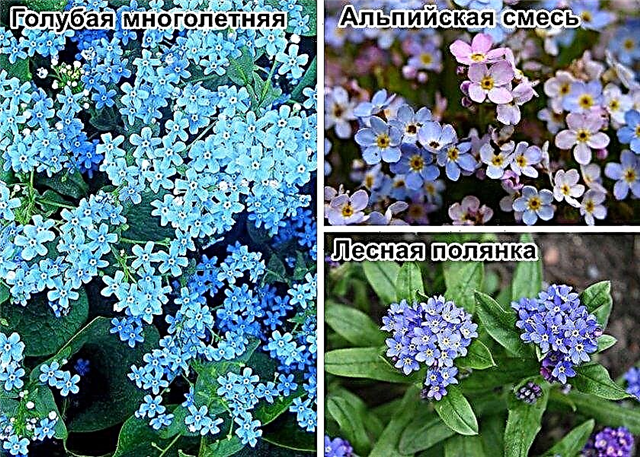
Dubravnaya
This grassy type of forget-me-nots, like the previous ones, is a perennial plant. The branched stalk in an adult specimen can reach a maximum height of 30 cm. It is covered with a slight fluff, which is also located on the leaves. The latter have a rich gray-green color. The first inflorescences appear only in the second year of development. They are almost always painted in blue. It blooms in May. The last petals fall two months later. In a seed box, an oak-tree species forms a fruit - a nut. It has a dark olive color and glistens in sunlight.

Field
Forget-me-not field has a core root system. The trunk of the plant is branched and can reach the highest height among other species - 50 cm. Leaves on both sides are covered with small hairs. In nature, flowers are most often found in a blue hue, although you can find white and pink colors. Flowering begins in May. In particularly warm regions of the country, they can stand until late autumn.
The fruits are presented in the form of nuts, in which the seed is enclosed. In order for it to sprout, you need a temperature of at least + 4 ° C. Seeds germinate successfully from a 3-centimeter depth. During a season, one plant can reproduce up to 700 seeds. They can ascend even 3 years after collection. For planting, just scatter them on the surface of the earth.
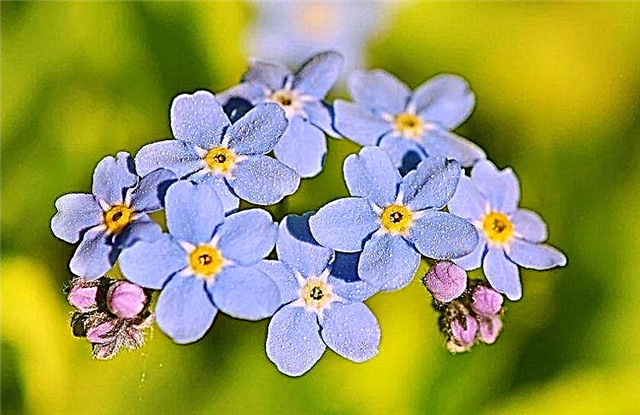
Flower arrangement
The plant has been cultivated since 1868. This type of forget-me-not is common in the Swiss Alps. Although it is a perennial, it lives only two years. The maximum height of the stem is 20 cm. The flowers are always painted in blue: from sky blue to dark blue. Differ in non-forget-me-not size. Kind of light and moisture.
Important! The main differences between different types of forget-me-nots are considered, in most cases, the length of the stem or the size of the flowers.
Krylov's forget-me-not
In appearance, it is very reminiscent of the forest form of forget-me-nots. A significant difference is considered to be larger shoots that do not bear fruit. The stems are hairy up to 40 cm long. The flower is dark or light blue up to 10 cm in diameter. In the wild, most flowers are found in Siberia and Central Asia.
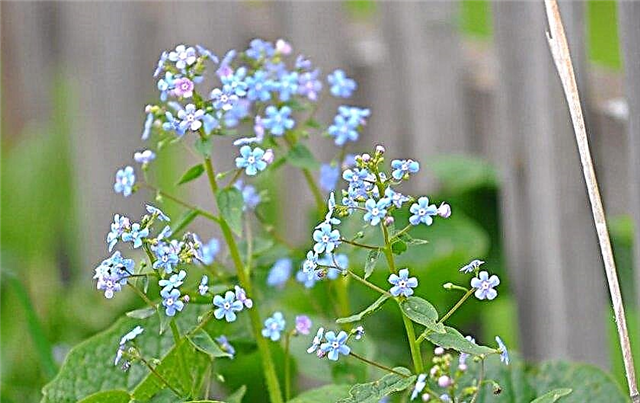
Forget-me-not Chekanovsky
This two-year-old form of forget-me-nots is listed in the Red Book. Until now, the exact number of plants existing today is not reliably known. It is believed that Chekanovsky's forget-me-not occurs exclusively between the Lena and Olenyok rivers, located on the territory of the Russian Federation. Prefers to grow on rocky soil in the tundra. The plant is not tall, up to 10 cm, with a large number of shoots. Small leaves are elliptical in shape, flowering is small, propagated by seeds. Until now, there is no exact information about this species in biological literature.

Sakhalin
This long-term type of forget-me-nots has been living in nature for no more than 3 years. Based on the name, one can correctly assume that its habitat is concentrated in the Far East. In appearance, it is similar to the forest one. The maximum stem length is approximately 28 cm. The diameter of blue flowers reaches 10 mm. The first inflorescences appear in late June. In some regions, it is listed in the Red Book.
Annual types of forget-me-nots
An annual plant is considered to be those whose life cycle lasts no more than one season. Therefore, this grass not only blooms for short spring and summer, but also brings the maximum number of seeds for reproduction. Annual species are much smaller than perennial. No other visible differences from the above species were noted.
Small flowered
The plant stem can grow up to a maximum of 20 cm. In this case, the minimum fixed size is only 5 cm. An inflorescence is formed on it. During flowering, the forget-me-not is covered with many small flowers, the diameter of which does not exceed 1 mm. Almost always they are painted in blue. Leaves, whose length reaches 4 cm, and the stem are pubescent.
Kindred
A related kind of forget-me-nots prefers to grow in the forests of the Caucasus. This plant is no different from the previous one, except for the size of the flowers. They are quite large and reach 1.3 cm in diameter.
Lazistan
This annual plant prefers shaded forest glades of the Caucasus. The species differs in small shoots, the length of which varies from 15 to 20 cm. One inflorescence is usually located on the stem. On it, flowers of a bluish tint of a small size bloom. Leaf and stem are pubescent.
Important! Tropical species of forget-me-nots in the wild can only be found in the highlands. And those growing in temperate latitudes, - in swamps and near water bodies.
Rare flower
The rare-flowered species is found almost throughout Siberia, the Caucasus, Central Asia and Eastern Europe. Most often, only one stem develops in a plant. Its length can be from 5 to 30 cm. When a flower is cut, juice is abundantly secreted. The stem is pretty simple to break. In inflorescences, there are a large number of small flowers. Typically, their diameter varies from 1.5 to 3 mm. The lower part of the leaves is covered with fine and soft down.
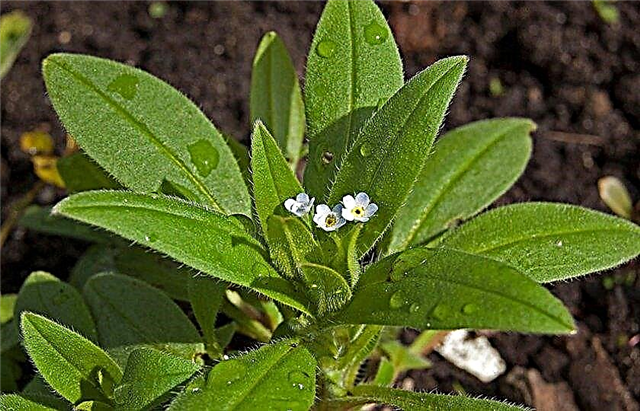
In most cases, special care for the plant in the garden is not required. Forget-me-nots can successfully grow both in partial shade, and in places illuminated by sunlight in the garden. Florists prefer loamy soils that are saturated with organic matter. Forget-me-nots, given their early flowering, can be planted in compositions with bulbous flowers. Since the plant is in most cases found near water bodies, it is used in landscape design, decorating artificial ponds. Forget-me-not is very popular in many countries of Europe, so it can often be found in spring bouquets for sale.



